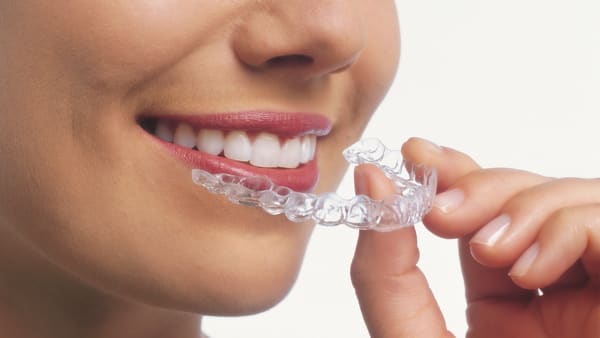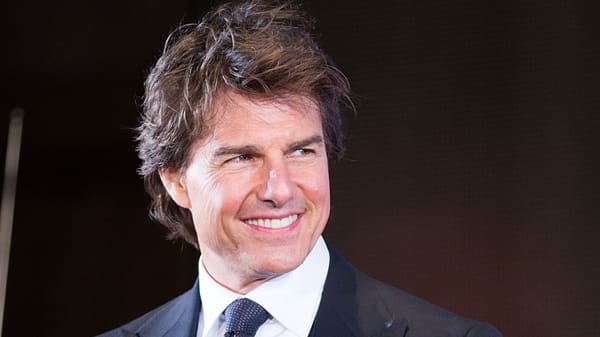Invisalign Glasgow
Invisalign braces offer a discreet way to straighten your teeth. Almost invisible, they are made up of a series of clear aligners, with no need for metal brackets or wires. They are more comfortable than traditional rough metal braces and they are removable, allowing you to eat and drink normally.
Invisalign has proven successful in America and around the world and Crystal Dental Care is delighted to offer Invisalign in Glasgow as part of our Cosmetic Dentistry portfolio.
How does Invisalign work?
Invisalign's aligners are made of clear, medical grade plastic, custom-made for you thanks to advanced 3D computer imaging.
Each aligner is worn for approximately two weeks and only removed to drink, eat and clean your teeth.
Little by little, as your aligner does its work, your teeth will move into the desired position.
You will need to visit the practice every six weeks in order to monitor the progress of your Invisalign treatment, with the total treatment time being on average 9 to 15 months.
The average number of aligners required is between 18 and 30 depending on your individual case.
Our hygienist will provide advice on how to keep your newly-straightened teeth in great condition once the main treatment is finished.

Can Invisalign help me?
You will need to be assessed during a consultation to find if treatment is suitable for you, but we find Invisalign is very effective for treating tooth gaps, crowded teeth and overbites.
Age is generally not a barrier to this treatment and we occasionally place them in patients well into their 50's and 60's with equally successful outcomes.
What you should know about Invisalign
- As with any brace system, there will be mild discomfort when you first wear each aligner but this will go after a couple of days.
- There is also a possibility that the aligners will affect your speech. Again this is a momentary inconvenience.
- There are no restrictions on what you can eat during treatment, as long as you not do so with the aligners in and that you brush your teeth and aligners afterwards.
- Smoking is discouraged as it can lead to staining of the aligners, and chewing gum is also strongly advised against when wearing the aligners.
- Aligners should be worn for around 22 hours per day, which gives you enough time to eat and clean your teeth and aligners.
- When treatment is complete you may need a retainer to wear at night to ensure the new alignment of your teeth is maintained.
Invisalign and the Gap in Your Front Teeth
If there is a single small space at the front then Invisalign may be the right choice. If there are several spaces or a single larger space then fixed appliances like Six Month Smiles might be preferred.
Pulling teeth together using brackets for anchorage and various types of elastic, can work very well in these cases.
At the end of treatment your teeth should be much straighter (and whiter if a course of tooth whitening is prescribed). Remember that patients should expect cosmetic correction of front teeth and not bite changing or amendments to facial profile, when embarking on Invisalign or other forms of Short Term Orthodontics.
Not everyone achieves perfection. Look at Tom Cruise's midline in the upper arch. Some things are much harder to fix than others but your dentist or orthodontist should be able to tell you what is reasonably achievable and roughly how long this will take. We will do that for nothing at your consultation.
The big question is always...
"Will I need a retainer?" The answer to this is always "Yes." We will show you photos and give you options on retainer types but these are generally well tolerated, essential requirements if you want the resting position of front teeth to be permanent.
Short Term Orthodontics are one of our favourite and most popular treatments in Glasgow. The before and after differences always look obvious and delight our patients.
Invisalign and Crowded Teeth
If mild crowding (2-3mm of overlap across all six front teeth) is present, Invisalign may represent an ideal treatment.
Should there be moderate or severe crowding, then other options may be considered.
These may include:
1. (Mild) Expansion of the dental arch: akin to developing a very small increase in the actual size of the arch. This must be very modest so as not to push teeth to the outer aspects of the jaw bone.
It may be considered in conjunction with:
2. (Mild) Interproximal Reduction or polishing very small amounts of enamel in the 'contact points' between teeth. This allows us to help teeth move more freely and 'steal' 1-2mm of space if spread across the whole arch ie 10-12 teeth.
The last option should be:
3. Extractions. This creates approximately 7mm of space per tooth. In the upper arch we generally balance ie take one premolar/molar from either side. This creates at least 14mm of space in the interests of symmetry. Essentially you are consigned to a long term treatment plan if this is the case.
Dr Murphy's Journal
"We had the pleasure of another successfully completed Invisalign case today. The patient returned several months after 'braces off' to have a second/backup set of retainers made. Her reasoning was sound: an imminent and lengthy trip to Africa. Patients often look for that reassurance when travelling, as trying to book in with a foreign dentist and sourcing replacement retainers (few dentists provide this service), can be extremely challenging, stressful and probably expensive. We charge £80 per retainer and they can be fitted within 24 hours."
Short Term Orthodontics - Where Invisalign Fits In
Short term orthodontics (STO) was popularised in the early part of the millennium, initially in the US where movie star Tom Cruise was one of the first to say "I don't want to wait that long for straight teeth."
Metal braces may also have influenced his thinking and the 2-3 year treatment plans embarked upon by many teenagers are seen to be socially prohibitive by the majority of adults.

The Rise of Removable Braces
The difference between Tom Cruise's teeth now and then is huge, as can be seen when looking back at his earlier films like Risky Business. It's easy to see why many young (and not so young!) patients are opting for the pursuit of straight, white teeth.
Tom Cruise chose a similar system to Six Month Smiles which works the same way but quicker than 'train tracks' using fixed cosmetic brackets and wires.
There was then a demand for removable systems like Inman Aligners and Invisalign. These are in place for approximately 22 hours daily but removable for eating and cleaning.
Invisalign is a High Technology Solution to an Age-Old Problem
Invisalign works by a series of appliances made from CADCAM technology using impressions of your teeth (moulds) taken at the beginning of treatment. This technology generates a series of images and profiles of where the teeth can (and should) reasonably be.
The Invisalign system uses software to calculate the estimated time of treatment and the number of appliances which will be required to arrive at the final 'destination' of straight teeth. These removable braces are generally exchanged every couple of weeks to facilitate progressive, gradual and gentle tooth movements.
Invisalign is intended to correct simple tooth straightening cases usually involving crowding limited to 2-3mm per jaw. Removable braces are good at moving teeth forwards, backwards and from side to side. Rotational movements and pushing a tooth up/pulling a tooth down are a little more complicated. Often fixed brackets will afford a more predictable outcome in complex cases such as these.
Rather than wait for one year with removable braces such as Invisalign, many patients will make the choice to go for fixed systems like Six Month Smiles on the advice of their dentist/orthodontist.
Invisalign After Care - Stay on Your Guard
Failure to persevere with nightwear of retainers is the number one cause of 'slippage' or crowding relapse. The good news and fundamental message is that should you be aware of any tooth movements, visit your dentist or orthodontist as soon as possible to have a new retainer made. Progressive relapse can be arrested.
A charge of, say, £80 for this service is far more affordable than a further course of cosmetic braces (£2000-2500 including whitening and retainers). The bad news is that the longer you wait the worse things tend to be and the likelihood of further treatment increases with time.
Tom Cruise image by Dick Thomas Johnson from Tokyo, Japan CC BY 2.0, via Wikimedia Commons
